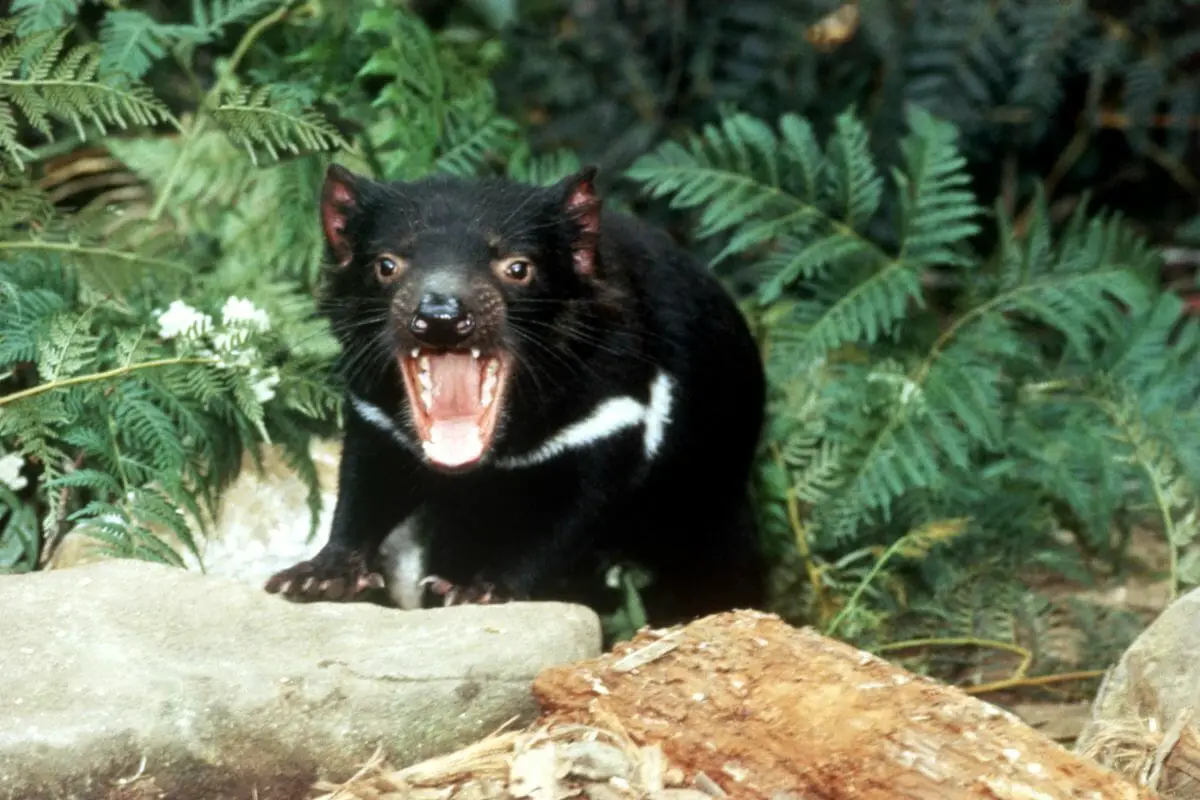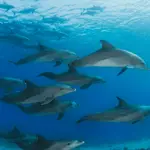While the Tasmanian devil might conjure images of Taz – the ever popular Looney Tunes character – they are actually real creatures, and ones that have been subject to widespread changes in terms of population in recent decades.

But what exactly is killing the Tasmanian devil, and what efforts are being made to remedy this problem?
What Is A Tasmanian Devil?
Of course, there might also be people who really do not know what a Tasmanian devil is. So let’s take a look at where they are from, and what their notable characteristics are.
Habitat
Until recently, the Tasmanian devil was only thought to be present on the Australian island state of Tasmania – however, in recent years, efforts have been made to introduce them to New South Wales on the mainland to give the population the best chance of regenerating.
Temperament
Tasmanian devils tend to be rather solitary creatures, choosing to live and hunt on their own.
However, when it comes to eating and defecating, they generally like to do it in communal areas with other members of their species.
This might seem like strange behavior, but when you consider they are most vulnerable at these times, it makes a lot more sense.
Characteristics
In terms of looks and attributes, Tasmanian devils are characterized by a small stocky build, bodily dimensions akin to a small dog, black fur, a pungent odor, extremely loud and disturbing screeching, a keen sense of smell, and a particular sense of ferocity when it comes to feeding.
They have a particularly fearsome reputation – as suggested by their title of ‘devil’ – and their large heads and thick necks give them one of the strongest bites for a creature their size, something that makes them dangerous to their prey, domesticated pets, and even human beings who catch them on a bad day.
Why Has Their Population Reduced?
There are thought to be many reasons why the population of the Tasmanian devil has reduced.
Disease
Widespread epidemics throughout the years are one considered reason for the decline in the Tasmanian devil population.
They were thought to be scarce in the 1850s, and in 1909 and 1950 there were notable outbreaks of disease which reduced their numbers even further.
Culling
The first European settlers in Tasmania were known to widely hunt and consume Tasmanian devils, which has often been attributed to their dwindling numbers.
The taste of Tasmanian devil meat was often regarded similar to that of veal, making them a popular choice for hunters.
Following negative publicity at the time regarding the deaths of livestock at the hands of devils, ‘bounties’ were issued by local authorities, paying citizens for the removal of Tasmanian devils from rural areas and farmlands.
This trend of misinformation continued throughout much of the early to mid 20th century, with poisonings and trapping bringing the Tasmanian devil to near extinction.
Road Mortality
Of course, with the expansion of civilization within Australia and Tasmania – namely the construction of roads and the introduction of widespread, fast moving automobiles, Tasmanian devils have continually fallen victim to road deaths – as with most small mammals.
What’s more, it has been found that even with a car’s headlights on full beam, the Tasmanian devil was one of the hardest animals for drivers to spot – with most only noticing at the last moment, and making them impossible to avoid.
This is not helped by their jet black fur and small size, which can make them near invisible at nighttime.
Tasmanian devils are also known to eat dead animals – such as roadkill – meaning that they often stray into busy roads to get food, putting themselves in danger and making them likely to suffer the same fate.

Human Expansion
Of course, the Tasmanian devil population also suffered at the hands of humans, especially as European settlers colonized mainland Australia.
As expansion started inland from the coasts, more and more devils fell victim to hunting, culling, and animal attacks (from dogs etc), leading to population migration, and countless deaths within the species.
Devil Facial Tumor Disease
Facial tumor disease has ravaged Tasmania’s wild devil population.
First discovered in 1995, the disease is an example of transmissible cancer, which means it can easily be passed on from one animal to another.
Once infected, most devils succumb to the illness within a month, and the symptoms of facial tumor disease tend to involve the formation of painful tumors in and around the mouth, reducing their ability to properly eat and drink, and causing their death by starvation.
This disease is especially prevalent, and can pass between devils without triggering an immune response, which means catching the disease in time can be tricky.
What’s more, devils particularly prone to biting their kin are more susceptible to the disease, making the more dominant of the species the most at risk.
What Is Their Relationship With Humans?
Generally speaking, Tasmanian devils have a good relationship with human beings, despite their fearsome reputation, and the urban myths perpetuated through cartoons and media.
It is known that hundreds (maybe even thousands) of years ago, indigenous Australians would often shelter in the same caves as Tasmanian devils with no conflict or attacks to speak of, suggesting a relationship akin to humans and domesticated dogs.
While there have been instances throughout history where devils have been hunted – namely for their teeth – this seems to be a thing of the past, and could have been something that their fearsome reputation drastically reduced.
One notable instance of devil hunting was when a 7000 year old skeleton was found in Lake Nitchie in New South Wales.
The skeleton was found wearing a necklace containing 149 Tasmanian devil teeth from multiple creatures – although the necklace itself far outdated the skeleton.
Conservation Efforts
Of course, Australian and Tasmanian bodies have continually made efforts to conserve and grow the dwindling devil populations.
Reintroduction To Australia
As mentioned earlier, the Australian government has overseen drives to reintroduce the Tasmanian devil to mainland Australia – settling them in areas of New South Wales in the hopes that the species can once again thrive on the mainland.
Breeding In Captivity
Attempts to breed Tasmanian devils in captivity have been somewhat successful, despite rocky starts in the early 1900s.
However, they are now featured in zoos and wildlife sanctuaries all around the world – giving hope to conservationists.
Monitoring Disease
To counteract the effects of devil facial tumor disease, conservationists have made efforts to separate infected devils from the rest of the population in the hopes of quelling the outbreak.
However, this is ongoing work, and has limited success due to the prevalence of the disease.
Final Thoughts
And there we have it, everything you need to know about the Tasmanian devil, and the reasons behind the dwindling population over the years.
Despite their fearsome reputation, and the troubles the species has faced, continual efforts are being made to grow populations, track notable illness hotspots, and protect them from hunters, all in the hope that this iconic Australian native can remain a feature of the islands for many years to come.









